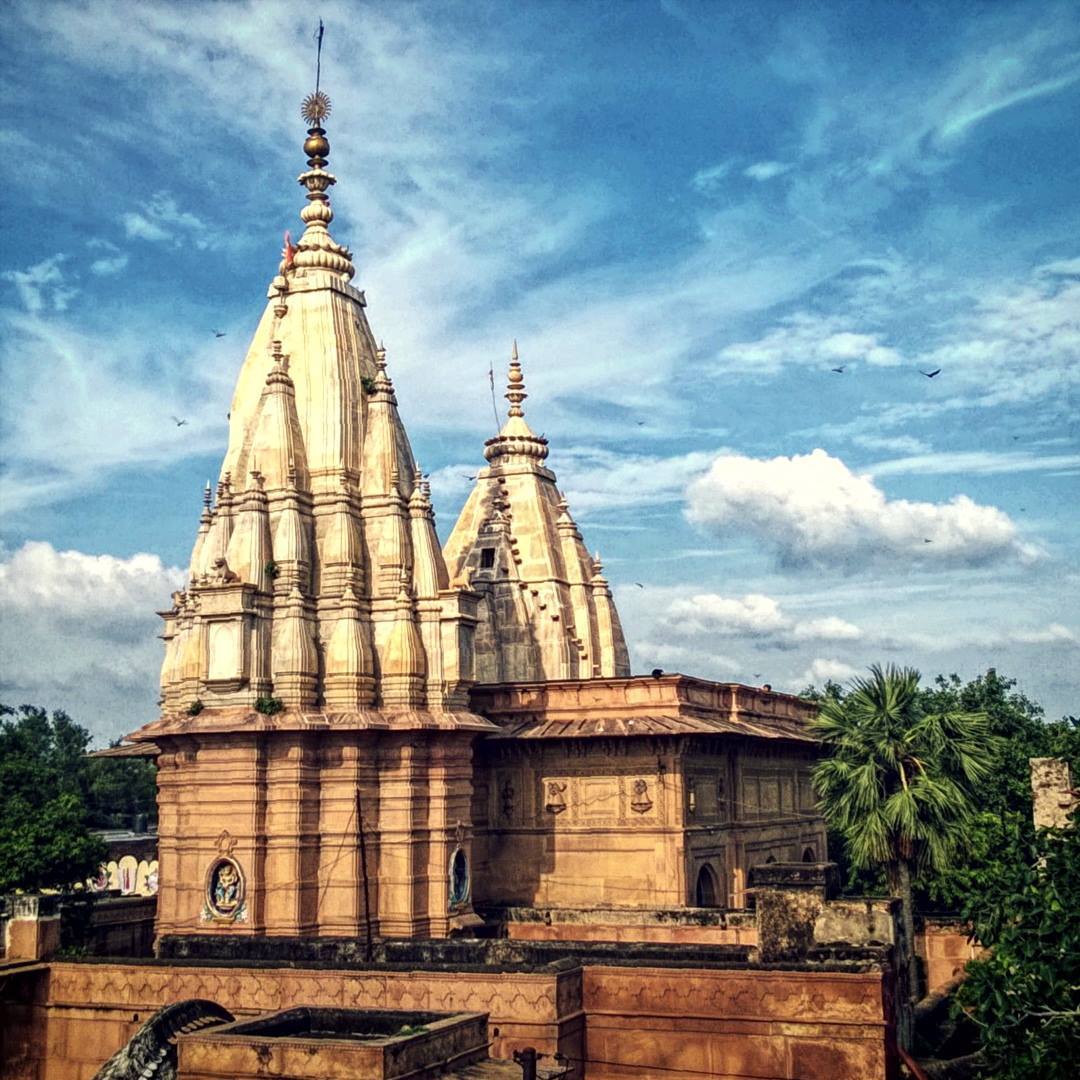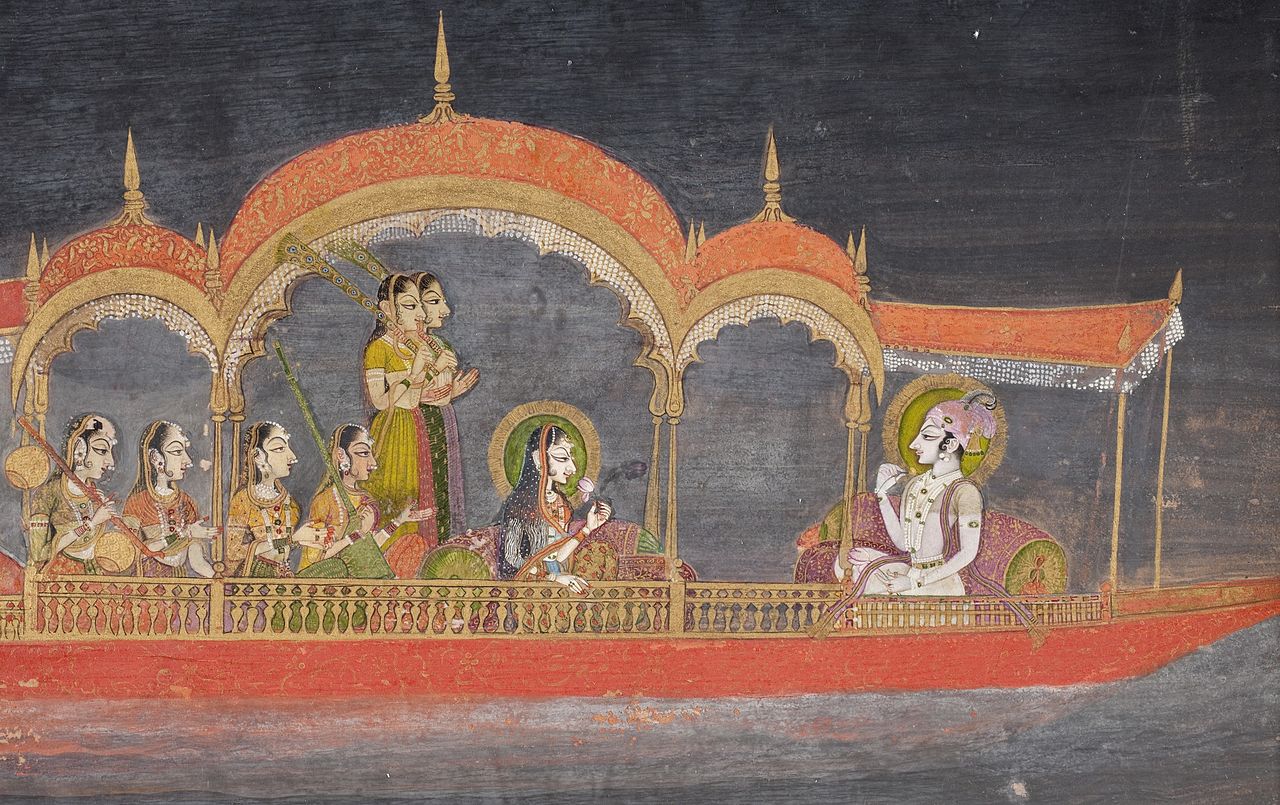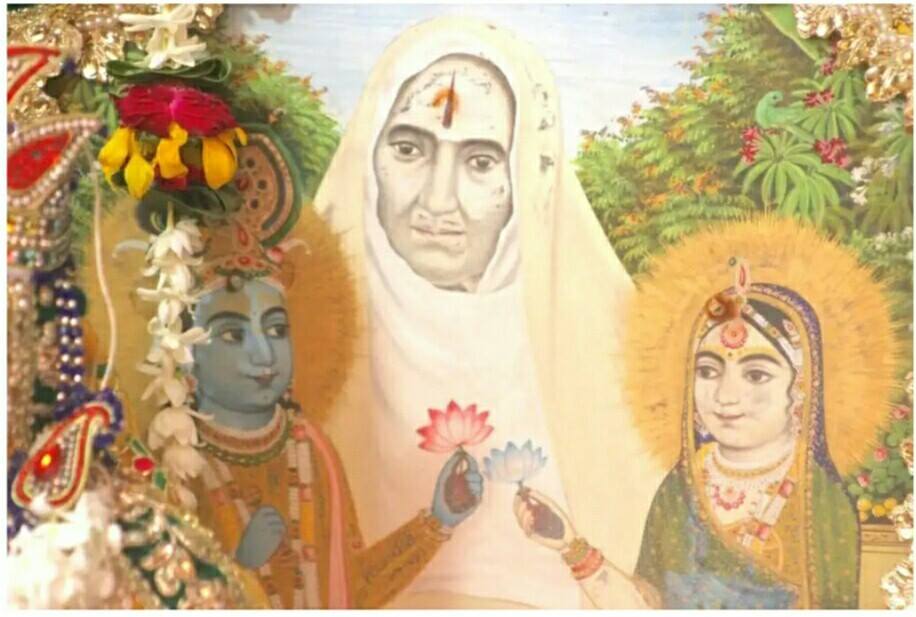Lala Babu had great such love great love for the Deities that they showed signs of being jagrit (alive).
2021-10-29 (Vrindavan Today News): Day 18 of Kartik Braj Darshan with Vrindavan Today is dedicated to Lala Babu’s Shri Shri Radha-Krishna Chandra. Born in 1775, Lala Babu was around 40 when he came to Vrindavan and established the Deities of Shri Radha-Krishna Chandra and Lalita Devi in a magnificent stone temple in 1810.
The parallel horizontal lines of the temple dome create a striking effect, more pronounced for its simplicity. On each of the four sides of the temple, there is a fresco of one of the great protectors. Narasimha Dev stands on the front side and Varah Dev is depicted on the right side. These days, the temple is not well maintained, but these frescoes have been given a fresh coat of paint so they stand out brightly against the backdrop of the brownish stone. There’s also a huge garden at the back.
Lala Babu spent the last six years of his life in Braj and used all his savings on building a temple that is now considered one of the finest examples of 19th century architecture.
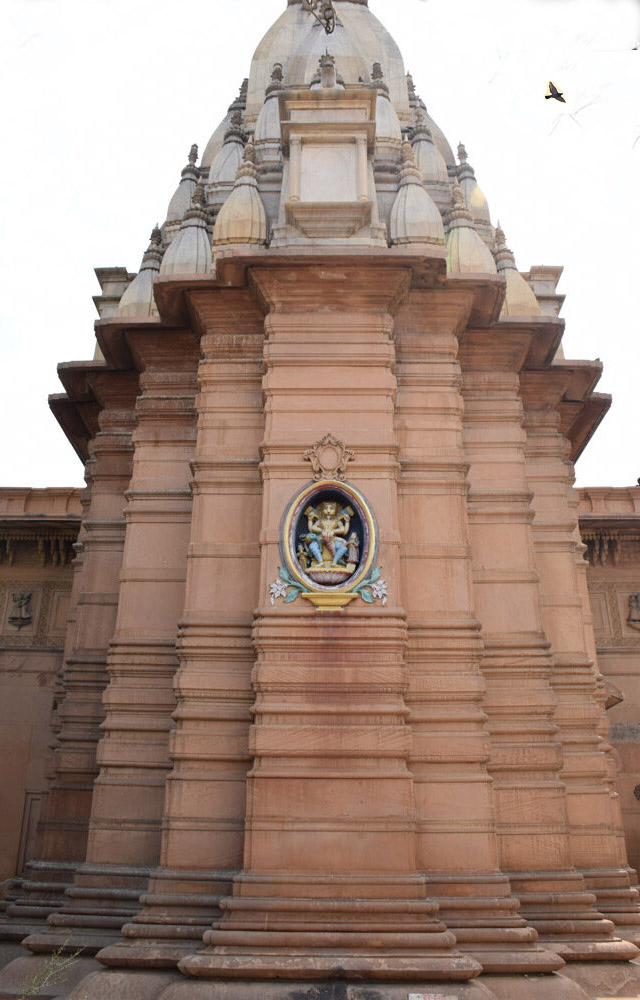
In order to understand the place that Lala Babu’s temple once held among the prominent temples of Vrindavan, we have to look to historical sources like F. S. Growse’s 1883 Memoire, which states, “Of the modern temples, five claim special notice [Lala Babu temple, Shahji temple, Radha Indra Kishor, Radha Gopal and Jai Singh Gehra]. The first in time of erection is the temple of Krishna Chandrama, built about the year 1810, at a cost of 25 lakhs, by the wealthy Bengali Kayath, Krishna Chandra Sinh, better known as the Lala Babu.”
Even after having such a grand temple constructed, Lala Babu did not take shelter in the temple complex; instead, he lived in true babaji style, wandering here and there, subsisting on alms provided by Brajwasis.
He died in Govardhan at age 46. His Samadhi is located just outside the front gate of the temple. A separate wire fence has been built around the Samadhi to protect it and it is not usually opened for visitors. Both Lala Babu and his wife have their samadhis here. The temple does not have any other memorial to Lala Babu; he was very humble and did not expect anyone to worship him.
Lala Babu temple is just behind Rang ji temple, but, to reach here one needs to take a detour from the main tourist drag, through the narrow residential streets of old Vrindavan.
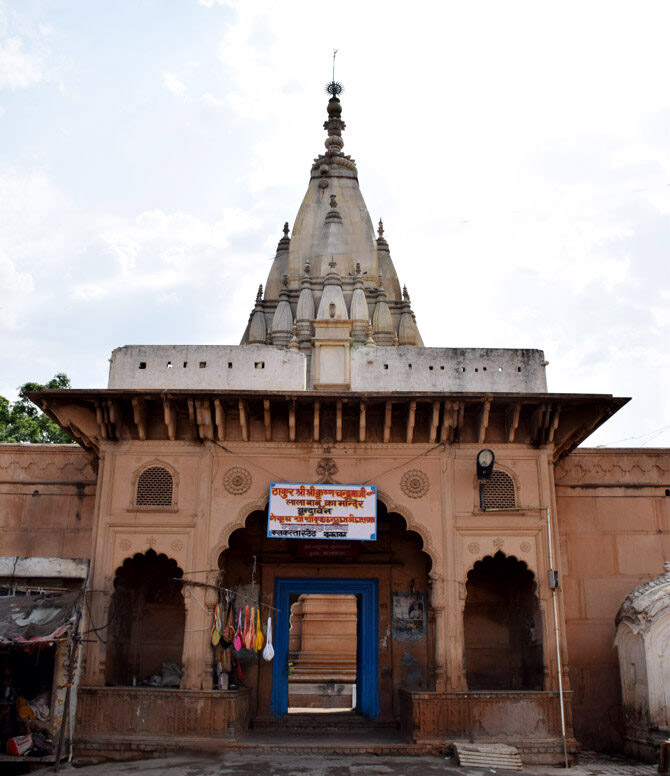
About Lala Babu
Lala Babu’s legal name was Krishna Chandra Sinha. He was a Bengali kayastha. Just a year after his father died, he left his wife and children, sold up his estate in Murshidabad, East Bengal and moved to Vrindavan. Once here, he started the construction of the temple.
In the six years that Lala Babu wandered around Braj, living as a Babaji, he would often return to visit his temple. He had great such love great love for the Deities that they showed signs of being jagrit (alive).
The Deity always responds to the heart of the devotee
Soon after the Deities were installed, Lala Babu had the Pujari conduct two experiments to be sure that the installation ceremonies had been successful. First, he had the Pujari place some butter on Thakurji’s head. The butter soon melted as it would from the heat of a living entity. Next, he had the Pujari place some cotton in front of Shri Krishna’s nose. Both Lala Babu and the Pujari saw that the cotton was moving back and forth with the force of Thakurji ‘breathing’.
In the chapter on Lala Babu in Saints of Braj, Dr. OBL Kapoor says, “It was Lala Babu’s bhava that enabled the Deity to pass the two tests successfully. The Deity always responds to the heart of the devotee.”


